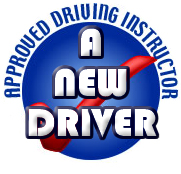DRIVING LESSON POINTERS
Get in gear: your first time in the driving seat
You have actually been studying, and now it’s time to put what you’ve found out into practice behind the wheel. Reserving your very first driving lesson is interesting, but it may not take too long for the nerves to sneak in. Let’s have a look at a few things you can do to help keep you calm, cool and gathered as you discover how to drive.
How to prepare for your very first driving lesson
Review the Highway Code – not only will it assist you when it comes to taking your theory test, it’ll keep the rules and regulations of the roadway fresh in your mind.
Choose a practical outfit. Try to wear something comfortable that you can move around in and prevent any restrictive clothing and shoes. High heels and flip flops, in particular, aren’t ideal when driving.
Remember your provisional licence – your instructor will examine that you have it. You can’t legally lag the wheel without one so it’s an outright need to for your very first driving lesson. You might likewise be requested your check code, so your instructor can examine your online licence equivalent.
Ensure you’re physically fit to drive. If you require them, prevent consuming the night before and remember to bring your glasses or contact lenses.
Pass your test with us
Driving SchoolDriving Test Ireland
What do you do on your very first driving lesson?
Will I drive immediately?
Do not fret – you will not get in the driving seat quickly. First, your instructor will drive you to a peaceful road where you’ll learn all the basics of the automobile controls. This includes the gears, the pedals, and what’s called the cockpit drill.
What’s a cockpit drill?
This is a workout that all chauffeurs should carry out when they get in the cars and truck, and it’s generally one of the first things you’re taught. The cockpit drill (frequently known as the DSSSM regimen) includes examining your doors, seat, steering, seatbelt and mirrors:
- Doors– inspect all doors are closed and protected prior to beginning your engine.
- Seat and steering– change your seating so that the controls are within simple reach and you have a clear view of the roadway. You need to also adjust your headrest to prevent whiplash if you’re in a mishap.
- Seat belt– make certain you and your travelers are buckled in.
- Mirrors– position your mirrors to reduce your blind spots.
How do I move off?
When it pertains to the big minute– taking control of the cars and truck– you’ll need to move the car off and show that you can safely do the ‘Prepare, Observe, Move’ regular:
Prepare – getting the automobile all set to retreat when the road is clear
- Press and hold the clutch down with your left foot.
- Select first gear.
- Press the gas pedal down with your right foot until you’re at about 1500-2000 rpm.
- Bring the clutch up slowly until you discover the biting point.
- Be ready to launch the handbrake at the correct time.
Observe– showing your trainer that you’re aware of your environments
- Inspect all around the cars and truck trying to find anything that may affect your driving strategy.
- Examine both shoulders.
When you’re safe to go, move– confidently moving the cars and truck off
- Launch the handbrake.
- Launch the clutch gradually while carefully putting your foot down on the gas pedal.
- Ease up on the gas and manage the speed of the car utilizing the clutch pedal if you find you start to move off too quickly.
- Re-check your mirrors and blind spots and move your car to the typical driving position.
What if I slip up?
It’s typical to be nervous when you’re finding out to drive – and you’re not expected to master everything directly away. Driving is something you get better at with time and practice.
In the (unlikely) case of something failing, rest assured that your instructor can manage the automobile. All professional driving schools utilize dual controlled vehicles, which suggests your instructor can action in if you need some assistance.
Booking your first driving lesson is exciting, but it might not take too long for the nerves to sneak in. You can’t lawfully be behind the wheel without one so it’s an absolute should for your first driving lesson. Your trainer will drive you to a quiet road where you’ll discover all the basics of the car controls. It’s normal to be anxious when you’re finding out to drive – and you’re not anticipated to master everything straight away. Driving is something you get better at with time and practice.
Related Articles
[page-generator-pro-related-links group_id=”1597″ post_status=”publish” output_type=”list_links” limit=”6″ columns=”2″ link_featured_image=”0″ orderby=”rand” order=”asc”]
Learn More

